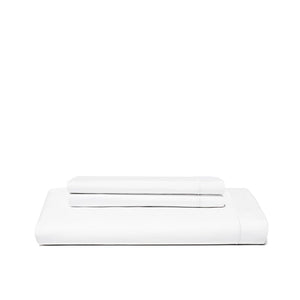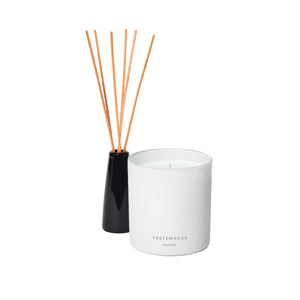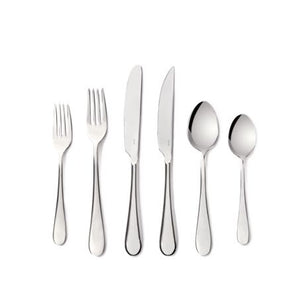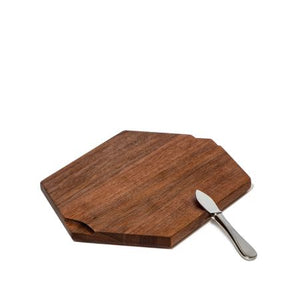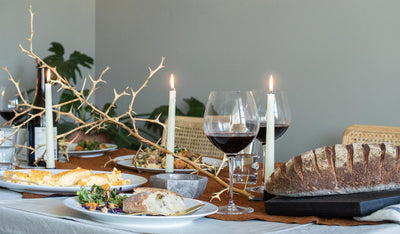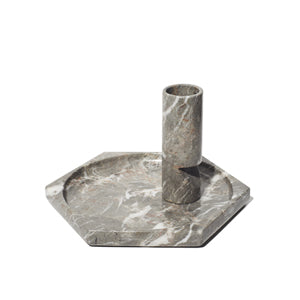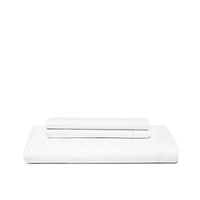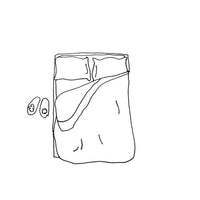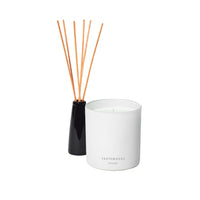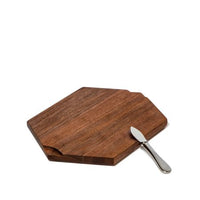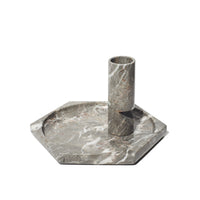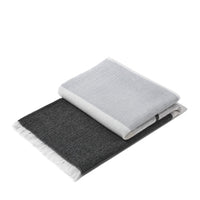
Chef Mark Ladner is content to do things simply. The James Beard Award Winning chef — who led the kitchen at Manhattan’s Lupa, Otto and, most recently, the Italian fine dining superpower and a New York Times four-star restaurant Del Posto — sits atop the culinary world. Sam Sifton, who awarded Del Posto its four-stars in 2010 (making it the first Italian restaurant to receive full marks since 1974), wrote of Ladner, "His cooking is not about recreating Italy on a luxe scale so much as it is about recreating the Italian spirit on the grandest scale imaginable." A more recent Times piece dubbed Ladner "a pasta whisperer, unsurpassed among American chefs." The Boston native makes good Italian. And we like good Italian. And we really like Mark.

We invited Ladner into our kitchen and asked him to cook a casual, late-night meal he would make at home — something he’d prepare at the end of the day, a meal that would help him unwind, relax, calm down. Something nurturing and personal. He agreed, and since dining on pasta from Ladner's pot is one of the premier culinary experiences in the world, we invited a small party to share in the spoils. We held a late night dinner at The Whitespace, with Snowe Founders Rachel and Andres, Ladner’s business partner, Nastassia Lopez, and a few other close friends. You don’t turn down Mark’s pasta; and our invite list, of course, did not.

Ladner is both an expert in and a lover of Italian food. "One advantage of Italian cuisine is the romance of the culture — this idyllic, mid-50s, matriarchal society," Ladner said. "The idea that the food is made with love, in a very nurturing and nourishing way." He spreads the nourishment and nurturing with simple, elegant dishes.
For our dinner, Ladner revisited his pasta roots. A lifelong resident of the restaurant, Ladner started at mom and pop Italian spots. He was a kid looking for gainful employment, and the vibes of the kitchen drew him in. "In the mid- to late-80s, the restaurant industry was still considered sort of fringe," he said. "Unsavories. Drug addicts. Degenerates. A pirate ship — if you will. Which is a lot of what attracted me."
Those early experiences in the kitchen stuck. "When you're young and your filters are open, early influences resonate with you in a way that you can't capture more than once," Ladner said. Italian embraced him as a youth, and he continues to embrace Italy as an accomplished adult.

We started our meal with one of the first dishes Ladner learned to cook — a rigatoni all’ amatriciana, "basically spicy bacon and tomato sauce," Ladner noted. With guanciale (pork jowl), tomato sauce and little else, it fits with his stripped-down aesthetic. "The whole country is sort of an age old farm-to-table concept,” Ladner noted. “And that's undeniably what creates the best food — eating things that are simply prepared, grown close to home and aren't really fussed with too much." Simplicity. Good ingredients. Straightforward preparation. Smiles all around.

The pasta was perfect; the salty (not smoked), porky guanciale worked its flavor into the sauce, while the sauce cradled the pasta with a balanced richness that kept you excited for the next bite. This is not a heavy dish, nor a quiet one. It’s a balance of bursts of flavor, savoriness and heartiness and the simplicity of a core set of ingredients come together quickly, humbly, naturally. It’s classic Italian. It’s a grandmother’s hug. And the recipe — for you to try at home with loved ones — is as straightforward as the flavors are heartwarming.

Ladner's recent career move reinforced his approach to classic, essential Italian. In late 2016, he left his position as Executive Chef at ornate Del Posto to open a simple — yet incredibly innovative — pasta restaurant that’s 14-years in the making, Pasta Flyer. Mario Batali — a longtime friend (and longtime employer) of Ladner’s — chronicled his progression as a chef in the foreword of The Del Posto Cookbook, "Mark's style has evolved from classic white-tablecloth ristorante cooking, through rustic down-and-dirty osteria, to modern flexitarian pizzeria, and then on to cucina alta at Del Posto." Now, he's heading downmarket to disrupt fast-casual with high-quality, express pasta. Pasta Flyer utilizes a cutting-edge method of parcooking pasta, to allow the pasta to be prepared in front of the guest in seconds. It brings the speed and efficiency of fast-casual dining to soulful and deliberate classic Italian cooking. "We are creating something fast, healthy, whole food and inexpensive in a compelling cultural environment," Ladner summarized. Opening in a few weeks to a rolling boil of anticipation, you can count on us to be first in line.

Ladner’s democratization of pasta benefits all. The $179 "Captain's Menu" at Del Posto is not the most economical dinner option (though a justifiably memorable experience). But Pasta Flyer, with Shake Shack-esque prices, is an easily accessible treat. The goal is to distill good Italian into essentials, strip away the white table cloths and china, give people hearty pasta from premium ingredients, and waste little. "Italian culture is rooted in the less-affluent demographic of society — so they really don't waste anything," Ladner said. "Which is a really good ideology to live by." We're right there with you.

While the pasta was the focus of the evening, the remains of our rigatoni all’ amatriciana gave way to Ladner's second creation, a pasta frittata. In Italy, it is typical (and genius) to use leftover pasta in your eggs the next day. And with the hearty Felicetti pasta he used in this meal (and also at Pasta Flyer) the rigatoni tubes from the Dolomites of northern Italy are fully-capable of being repurposed. Ladner took the leftover pasta, coated them in farm fresh eggs, gently baked them, then topped them with generous dollops of pesto and ricotta. The pasta maintained its perfect al dente nature, and paired beautifully with the richness of the egg, cheese and pesto. Soft in the heart and crunchy at the edges, it’s the perfect late-night — or morning (depending on how you look at it) — meal. The beauty of the pasta frittata is that no one is like another - it comes together uniquely and deliciously, and we can make each our very own. We'll let you use your imagination and riff to your heart's content.

Good food is not fussy. It is not complex. It is nourishing. And it is best when shared at a friendly meal — especially a fun, casual late-night one, with loved ones gathered around the table. Ladner, for his own casual eats and in his professional career, has doubled-down on Italian essentials. On ingredients prepared simply. On being intentional without being snobby. On cooking with love. "I really do feel it deep in my soul," he said. "For reasons I can't necessarily explain."

RIGATONI ALL’ AMATRICIANA
(Serves 4 -6 people)
Ingredients:
- 1 tablespoon extra-virgin olive oil
- 6 ounces guanciale, pancetta or bacon (cut into slices approximately 1/2 inch thick)
- 1 large onion sliced into one inch slices
- 1 quart crushed tomatoes
- Kosher salt
- Pinch of chili flakes
- 1 pound rigatoni (or any pasta shape)
- 1/4 cup chopped parsley and stems
-
1/2 cup grated Parmigiano Reggiano
Preparation:
- Heat oil in a large skillet, cook the guanciale over moderate heat, stirring frequently, until browned.
- Transfer the pancetta to a plate. Add the onion and chili flakes into the skillet and cook over moderately high heat, stirring occasionally, until the onion is lightly browned.
- Return the guanciale to the skillet. Add the crushed tomatoes, season with salt and simmer while stirring for approximately 30 minutes.
- In a pot of salted boiling water, cook the pasta until al dente. Drain the pasta. Reserve some water for sauce.
- Put pasta back into empty pot. Add the sauce and coat evenly over the pasta. Incorporate parsley and parsley stems, reserved cooking water (to taste) and Parmigiano-Reggiano cheese.
To Serve:
In a dinner bowl, spread a large spoonful of the Rigatoni All’ Amatriciana, and garnish to state with Parmigiano-Reggiano cheese and parsley. Viola! Dinner is served.


